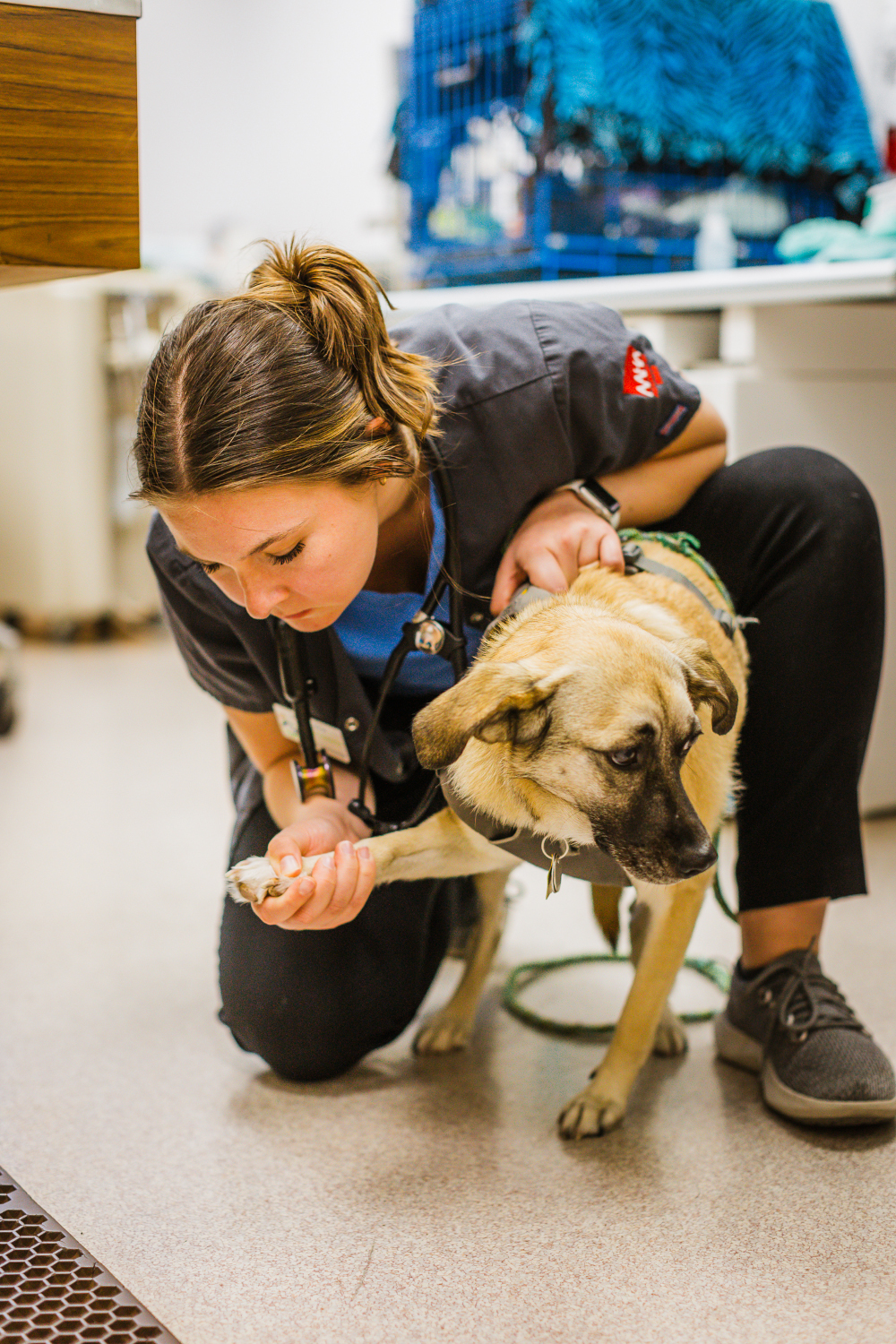Urgent Care available every Friday, 5pm to 10pm
Emergencies vs Urgent Care
With veterinary medicine constantly evolving, veterinary urgent care clinics, modeled after human urgent care, have begun to emerge. Understanding when to use either is vital to your pet’s care needs, as well as ensuring pets are in the right location based on their needs. Similar to human healthcare, if you are unable to get in to see your primary care provider, your needs may become either urgent or emergent. With dogs and cats, it can be a bit more tricky to determine where to go for the appropriate care.
Use a 2 Step Assessment:
 Since dogs and cats can’t talk (though maybe you’d argue differently), it’s up to us to assess whether or not something is wrong. This can be tricky and stressful, but when in doubt, trust your judgment. You know your pet better than anyone, so if you have a sneaking suspicion that something might be wrong, you’re probably right. And if in doubt, it's always better to err on the side of caution.
Since dogs and cats can’t talk (though maybe you’d argue differently), it’s up to us to assess whether or not something is wrong. This can be tricky and stressful, but when in doubt, trust your judgment. You know your pet better than anyone, so if you have a sneaking suspicion that something might be wrong, you’re probably right. And if in doubt, it's always better to err on the side of caution.
Step 1: Is Your Pet Stable?
The first step to determining where to go is to recognize if this is a life-threatening event, or if your pet is stable. Any life-threatening event should immediately go to emergency, rather than your primary care provider or an urgent care. Emergency rooms are designed to quickly triage a patient and admit if they are unstable.
Life-Threatening Problems (Head to the ER Immediately):
- Labored breathing or struggling to breathe
- Loss of consciousness
- Hit-by-car or a similar traumatic injury
- Multiple broken bones, or bone poking through skin
- Excessive bleeding due to major wounds
- Seizures, especially multiple in 24 hours, or one lasting 5 or more minutes.
- Rattlesnake bites (unless your pet’s primary care provider indicates they have antivenin)
- Inability to urinate (no urine production for more than 24 hours) especially if a male dog or cat
- Any other apparently life-threatening emergency
In most cases, following your instincts as a pet owner will help determine if you need emergency care. If you are unsure, call your primary provider or local emergency room for recommendation.
Step 2: Common Issues and Symptoms Addressed in Veterinary Urgent Care
 If your pet is exhibiting any of the following problems they are probably a great fit for veterinary urgent care. The most common issues include:
If your pet is exhibiting any of the following problems they are probably a great fit for veterinary urgent care. The most common issues include:
- Vomiting or diarrhea
- Bloody or frequent urination, painful but productive urination
- Painful, itchy, or smelly ear
- Red, swollen, irritated eyes, squinting, green-yellow eye diacharge
- Runny nose, coughing and sneezing
- Accidental / toxin ingestions (e.g. chocolate), or witnessed ingestion of foreign body with no sign of illness
- Scooting or acutely licking hind end, anus or vulva
- Rashes, scabbing, oozing, and other issues with the skin
- Limping/lameness and broken nails
- Behavior changes or something seems “off”
- Lumps and bumps
- Simple/minor wounds or lacerations
- End-of-life care (euthanasia)
- Broken toenails, foxtails
- Allergic reactions (facial swelling, hives, etc.)
- Some case-by-case surgeries and urgent procedures
When in doubt, either call a provider for guidance or simply bring your pet in to be seen. It’s often worth a quick office visit to gain the peace-of-mind that your pet is okay; and if something is wrong, you’ll be glad you brought them in to receive care!

